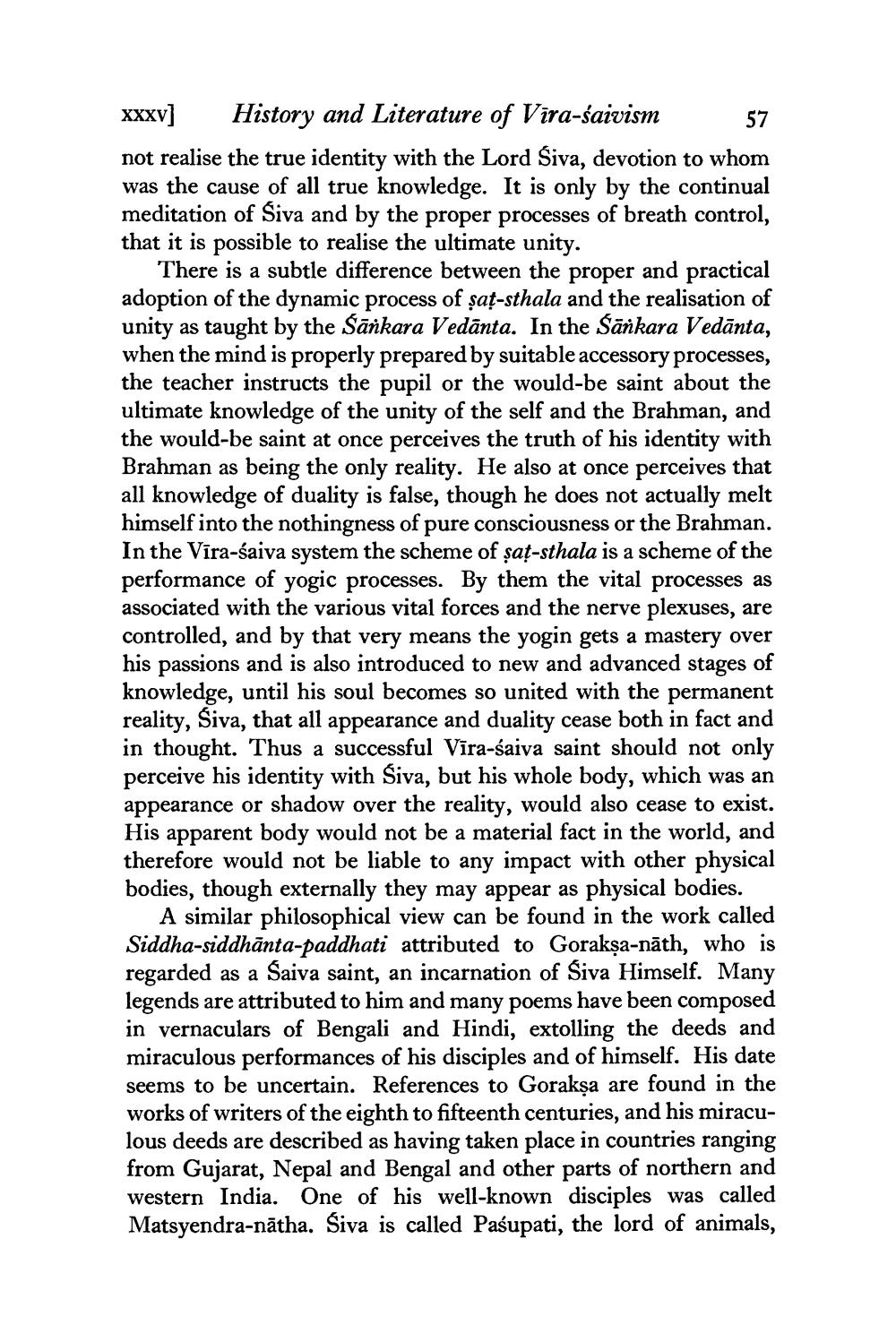________________
XXXV] History and Literature of Vira-saivism 57 not realise the true identity with the Lord Siva, devotion to whom was the cause of all true knowledge. It is only by the continual meditation of Siva and by the proper processes of breath control, that it is possible to realise the ultimate unity.
There is a subtle difference between the proper and practical adoption of the dynamic process of șaț-sthala and the realisation of unity as taught by the Sānkara Vedānta. In the Sānkara Vedānta, when the mind is properly prepared by suitable accessory processes, the teacher instructs the pupil or the would-be saint about the ultimate knowledge of the unity of the self and the Brahman, and the would-be saint at once perceives the truth of his identity with Brahman as being the only reality. He also at once perceives that all knowledge of duality is false, though he does not actually melt himself into the nothingness of pure consciousness or the Brahman. In the Vīra-saiva system the scheme of sat-sthala is a scheme of the performance of yogic processes. By them the vital processes as associated with the various vital forces and the nerve plexuses, are controlled, and by that very means the yogin gets a mastery over his passions and is also introduced to new and advanced stages of knowledge, until his soul becomes so united with the permanent reality, Siva, that all appearance and duality cease both in fact and in thought. Thus a successful Vīra-saiva saint should not only perceive his identity with Siva, but his whole body, which was an appearance or shadow over the reality, would also cease to exist. His apparent body would not be a material fact in the world, and therefore would not be liable to any impact with other physical bodies, though externally they may appear as physical bodies.
A similar philosophical view can be found in the work called Siddha-siddhānta-paddhati attributed to Gorakşa-nāth, who is regarded as a Saiva saint, an incarnation of Siva Himself. Many legends are attributed to him and many poems have been composed in vernaculars of Bengali and Hindi, extolling the deeds and miraculous performances of his disciples and of himself. His date seems to be uncertain. References to Gorakṣa are found in the works of writers of the eighth to fifteenth centuries, and his miraculous deeds are described as having taken place in countries ranging from Gujarat, Nepal and Bengal and other parts of northern and western India. One of his well-known disciples was called Matsyendra-nātha. Siva is called Pasupati, the lord of animals,




